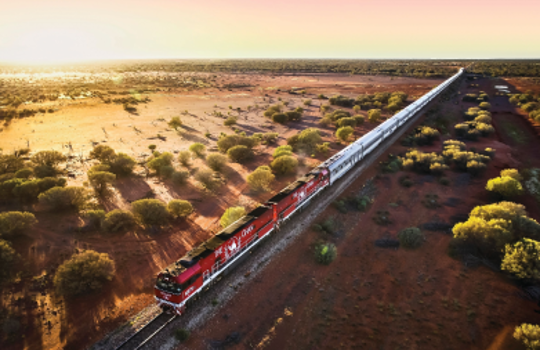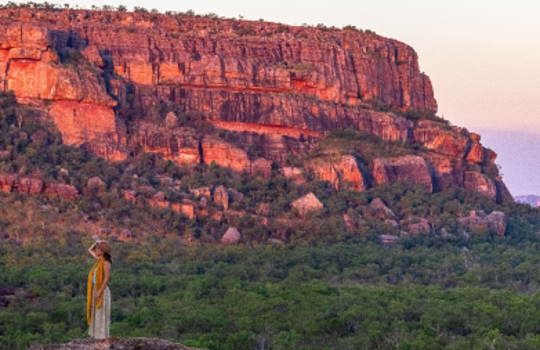-
Travel Type: Road Trip
-
Features: National parks, wildlife, desert, adventure, walking
-
Budget: $
HERE’S THE PLAN
Set your sights on the extraordinary, pack the essentials and a sense of adventure and let us guide you on a 3000km road trip through the heart of Australia along the Explorers Way.
ADELAIDE TO CLARE VALLEY
Driving time – 2 hours (141km)
Ready for an epic journey? Already picturing yourself cruising the Explorers Way, winding through Australia's breathtaking landscapes and discovering its hidden gems. Fasten your seatbelt and curate your ultimate road trip playlist for this unforgettable adventure.
Adelaide is the perfect launch pad for the journey. The Festival City has beautiful beaches only 20 minutes from the CBD, selfie-ops with hidden street art and cultural treasures to explore at the free attractions on North Terrace (Art Gallery of South Australia, South Australian Museum and National Wine Centre).
It’s fitting that the Explorers Way leads to South Australia’s Clare Valley wine region. It’s famous for riesling and has more than 40 cellar doors to explore. Soak up the European settlement history surrounded by vineyards and olive groves, taste wine and sample exquisite local produce. You can even do it while working off the calories on a Riesling Trail bike ride.
Clare Valley offers a great transition to the Aussie Bush. And the Outback is not far away.
Budget Tip: Prior to picking up your car or campervan, make a stop at the Adelaide Central Market, to pick up some delicious local snacks (think oozy cheeses, fresh bread, mouth-watering fresh fruit) for your ultimate adventure.
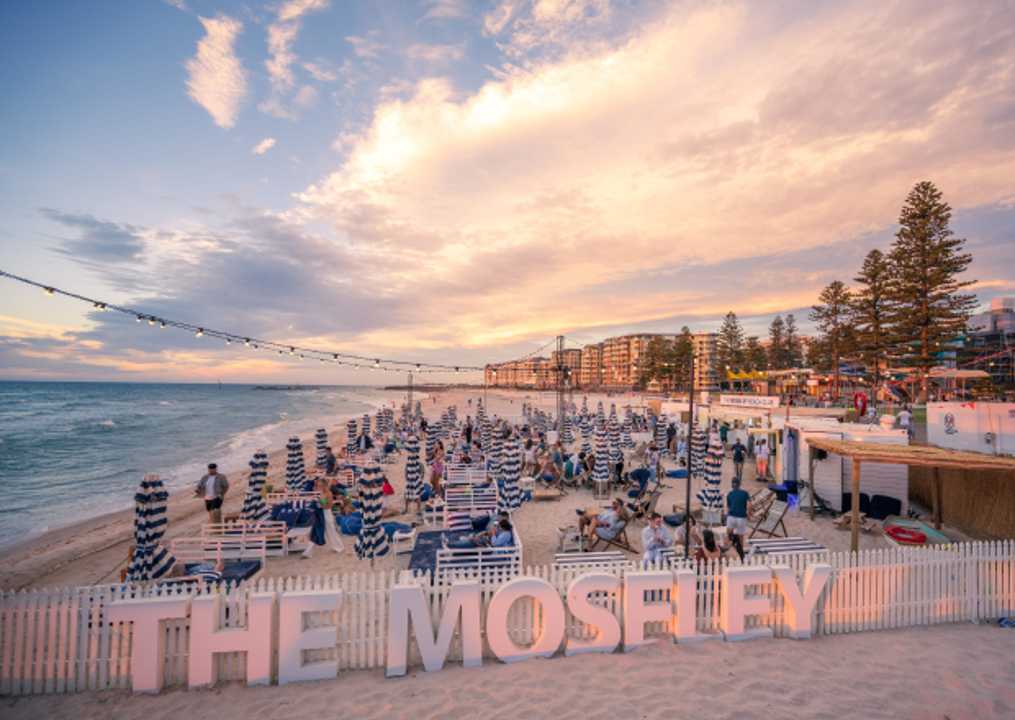

CLARE VALLEY TO IKARA-FLINDERS RANGES
Driving time – 3.5 hours (297km)
Golden canola fields and pastures give way to Australia’s infamous “red rugged outback” plus an impressive backdrop of ancient mountain ranges.
Through the crossroads city of Port Augusta and Outback towns like Quorn and Hawker, the Flinders Ranges are next.
Picture ochre-coloured cliffs, deep gorges and sharp ridges pushed up through the Earth by unimaginable forces millions of years ago. A deep history where the remnants of the earliest known multi-cellular life on Earth (550 million years ago) can be found at the Ediacaran fossils.
Hike the base of Wilpena Pound- a huge natural amphitheatre, or one of the other 14 hikes within the park. Keep an eye out for the abundance of wildlife which abounds including kangaroos, emus, yellow-footed rock wallabies and huge birds of prey.
Stop at Blinman for an underground copper mine tour and drive through Parachilna Gorge to Prairie Hotel for an Aussie pub experience and the famous Feral Feast – platters of goat, camel and kangaroo .
Searching for a deeper cultural immersion, attend the free Welcome to Country at Wilpena Pound Resort. Take the 3km hike to Arkaroo Rock for an up close look at some stunning Aboriginal rock art.
Budget Tip: There are a number of camp sites within the Ikara-Flinders Ranges National Park with sites from AUD$25 per night and can be booked prior. The Trezona Campground is a popular site as located near the internationally-significant geological Ediacaran Golden Spike.
EXPLORE FLINDERS RANGES
OFF GRID via Parachilna to William Creek
Driving time – 4.5 hours (388km)
SEALED HIGHWAY via Parachilna to Woomera
Driving time – 4 hours (375km)
Going off-road or sticking to the highway
From Parachilna you have a choice:
If you have the right off-road equipment, head north to Arkaroola Wilderness Sanctuary which has some of Australia’s best skies for star gazing. Truly unique, Arkaroola’s world-famous ridgetop tour takes you across razor-back ridges and peaks of Flinders Ranges most rugged mountains, making it a must do experience. Take the Oodnadatta Track from Marree known for having a Yacht Club in the middle of the desert and the infamous Camel Cup. Continue to venture onward across Anna Creek – the world’s largest cattle station - to William Creek. Make sure to stop in at the local pub in the smallest town in Australia with a current population of only 6 people.
If you’re in a 2WD, take the sealed highway via Port Augusta at the head of Spencer Gulf, then north to Woomera - home to SA’s rocket range.
Budget tip: Experience the amazing stargazing opportunities throughout this area (assuming the weather cooperates!). Just snag a comfy chair, a chilled beer, and take a moment to contemplate the night sky.
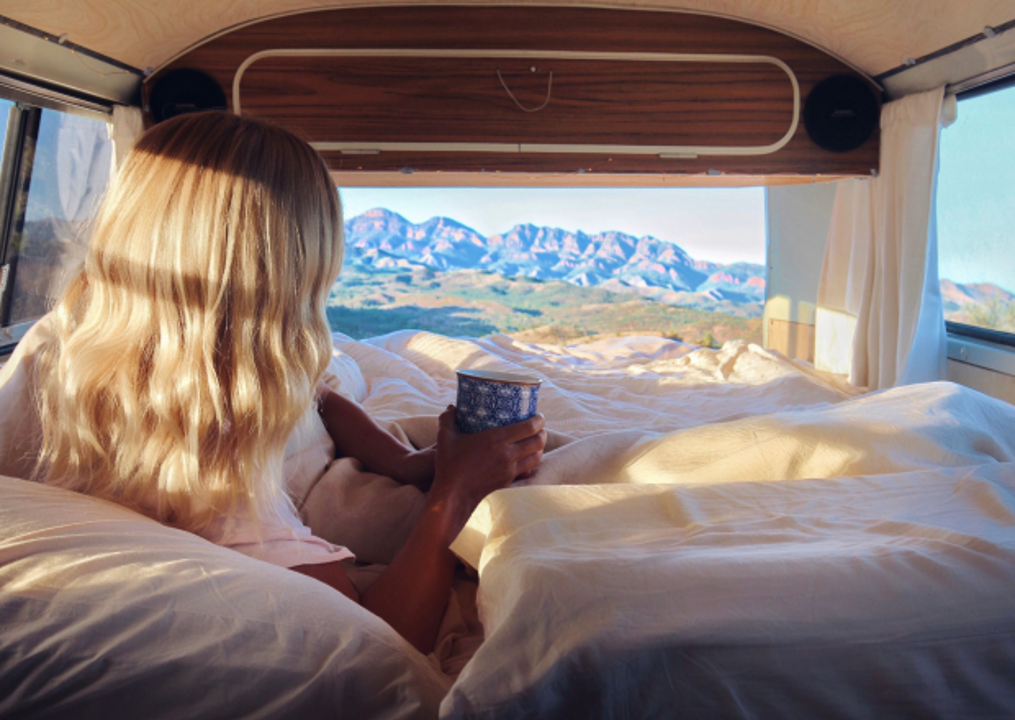
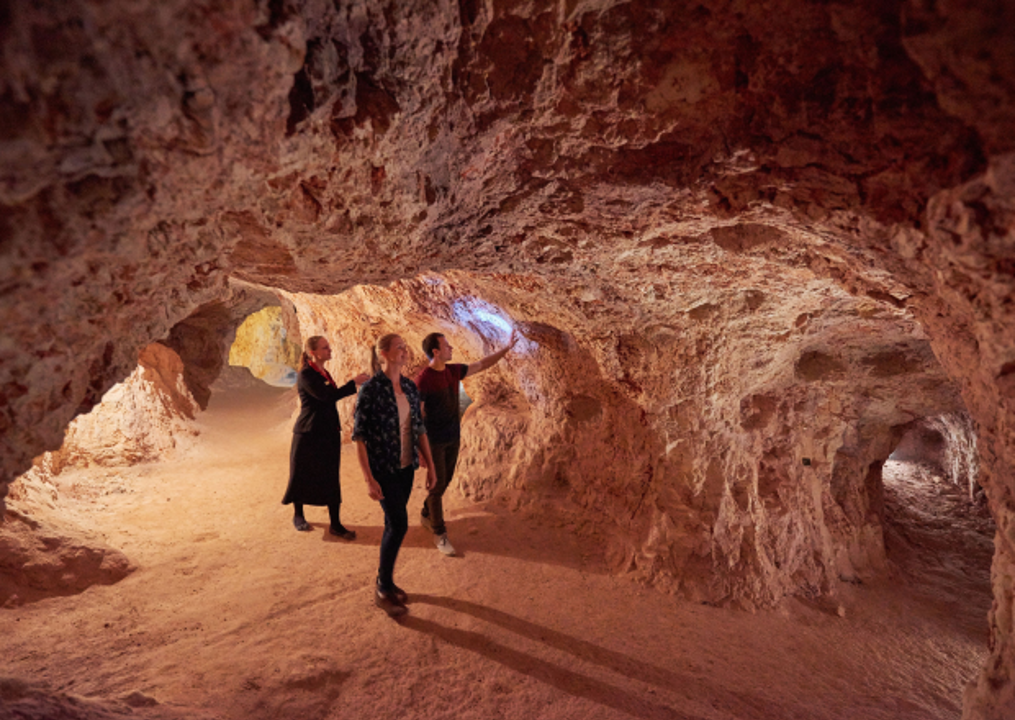
NEXT STOP: COOBER PEDY
Driving time - 4 hours (374km from Woomera) OR 2 hours (166km from William Creek)
About 40km out of Coober Pedy, the “moonscape” begins – thousands of opal mine shafts dominate the landscape.
Once you've arrived in this authentic outback town, check out the quirky move props (you might recognise Mad Max or Priscilla Queen of the Desert), then dig a little to discover the real gems. All the action is underground – hotels, homes, a church, bookstore and attractions like the Old Timer’s Mining Museum and Umoona Opal Mine, that show how Coober Pedy became Australia’s opal capital.
For something a bit different, visit the dugout of Crocodile Harry – a Latvian crocodile hunter who became a local legend and left his now vacant underground dwelling as one of the more peculiar sights around town.
Budget tip: Josephine’s Gallery is home to a Kangaroo Orphanage with feeding times daily. It also boasts an extensive range of Aboriginal artefacts with works by some of Australia’s most renowned Aboriginal artists.
COOBER PEDY TO ULURU-KATA TJUTA NATIONAL PARK
Driving time – 7.5 hours (734km)
On our way to Australia’s Rock Star – Uluru.
Expect a sea of spinifex grass and vast stretches of vibrant red desert, you’ll watch weather patterns rolling across the horizon. It’s mesmerising.
Roadhouses like Oodnadatta and Marla are conveniently located for fuel stops and to break the drive.
Crossing the border from SA into the Northern Territory takes you into the Red Centre – the spiritual heart of Australia.
At Erldunda, turn left (west) towards Yulara, the town gateway to dual World Heritage-listed Uluru-Kata Tjuta National Park.
Take a few days to explore Uluru and Kata Tjuta, both thought to be about 600 million years old. There are over 100 experiences available including free ranger-guided walks, self-guided hikes and drives, segway, bus and bike tours and scenic flights. Witnessing the changing colours of Uluru during sunrise and sunset is a mesmerizing experience. Several designated viewing areas, such as the Uluru Sunset Viewing Area, provide ideal vantage points to see the rock transform into a vibrant canvas of reds, oranges, and purples.
Budget tip: Join the free ranger-guided walk or Cultural Centre presentation for in depth information on Uluru. Visit the website for times.
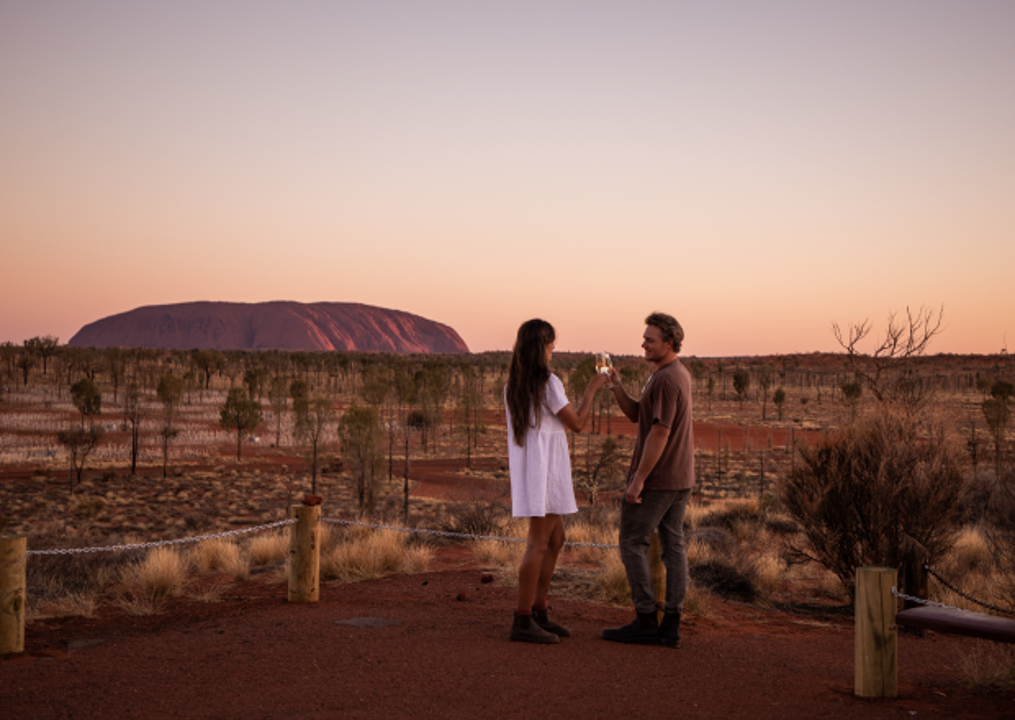
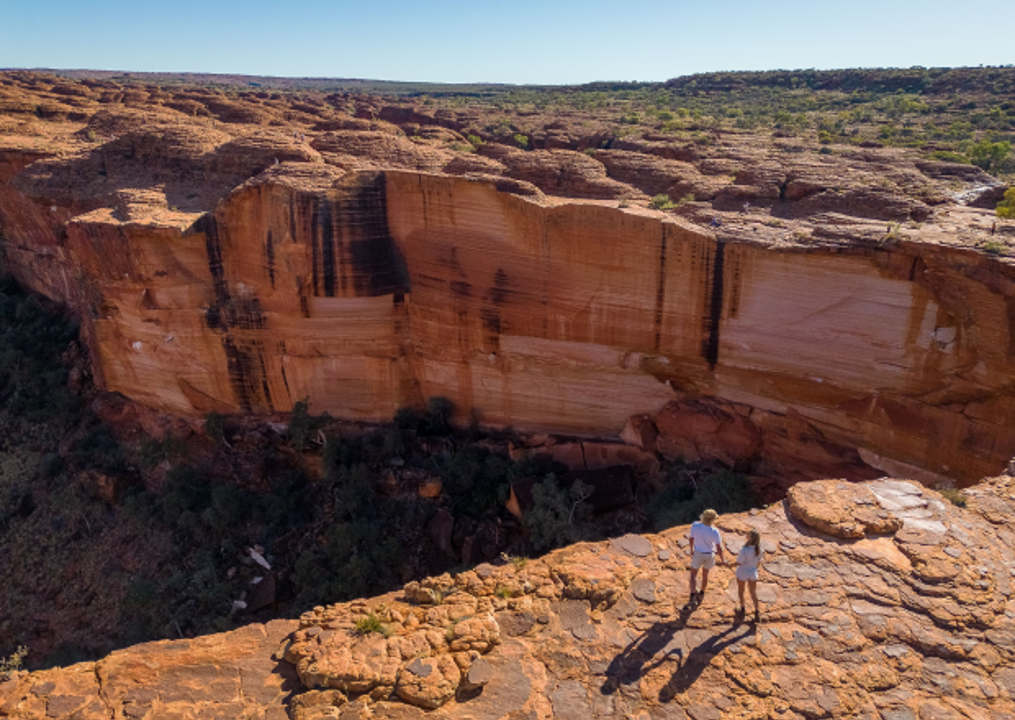
ULURU-KATA TJUTA NATIONAL PARK TO KINGS CANYON
Driving time – 3 hours (300km)
Follow the signs to the Kings Canyon turn-off in Watarrka National Park.
Yet another ancient geological wonder – this one with marine fossils embedded on top of the escarpment proving the centre of Australia was once an inland sea.
The best way to see the canyon is on foot and there are various walks to suit all capabilities.
Arguably the most spectacular one is the 6km Kings Canyon Rim Walk at sunrise.
After some relatively steep steps, the path crosses 300m-high sandstone walls with views into the canyon. Take a well-deserved break at the Garden of Eden, a permanent waterhole with 400-year-old cycads, before finishing the circuit along a layered rock face – nature’s perfect staircase. If you are short of time the Kings Canyon Creek Walk is a beautiful alternative to the Rim Walk, taking you through the centre of the canyon with incredible views from down below.
Budget tip: One of the most spectacular and cost-free experiences at Kings Canyon is to witness the sunrise or sunset. Head to strategic viewpoints like the Canyon Rim Walk or the Kathleen Springs lookout to enjoy this time of day - the soft lighting enhances the dramatic features of the canyon, making it a memorable experience for nature lovers and photographers alike.
KINGS CANYON TO ALICE SPRINGS
OFF GRID via 4WD Mereenie Loop
Driving time – 4.5 hours (332km)
SEALED HIGHWAY via Erldunda
Driving time – 5 hours (473km)
Next stop is Alice Springs – the unofficial capital of The Red Centre.
From Kings Canyon you have a choice of direction:
Going off-grid or sticking to the highway
In a 4WD, buy a (AUD$7) permit and tackle the unsealed Mereenie Loop to Glen Helen Gorge in West MacDonnell Ranges National Park (Tjoritja). Hundreds of wild horses add to the stunning scenery. Hermannsburg, Ormiston Gorge, the Ochre Pits, Serpentine Gorge, Ellery Creek Big Hole, Standley Chasm and Simpson’s Gap are “must stops”.
In a 2WD, go via the sealed Stuart Highway and stop at Erldunda and Stuart’s Well - both have food, fuel, caravan parks … and comical emus.
Budget tip:
You can visit the West MacDonnell Ranges on a day trip from Alice Springs or spend some time here on your way to Alice Springs. Ormiston Gorge is a great place for a refreshing swim, where you can admire the red cliffs of the gorge along with the diverse local flora and fauna. Overnight camping is also available in designated areas (fees apply).
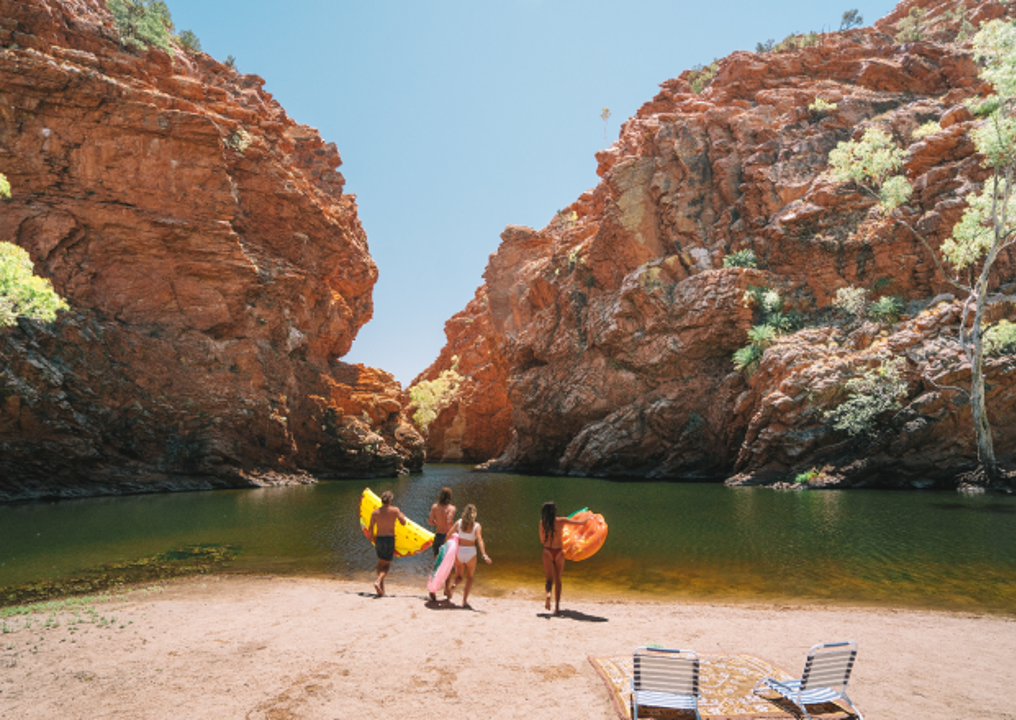
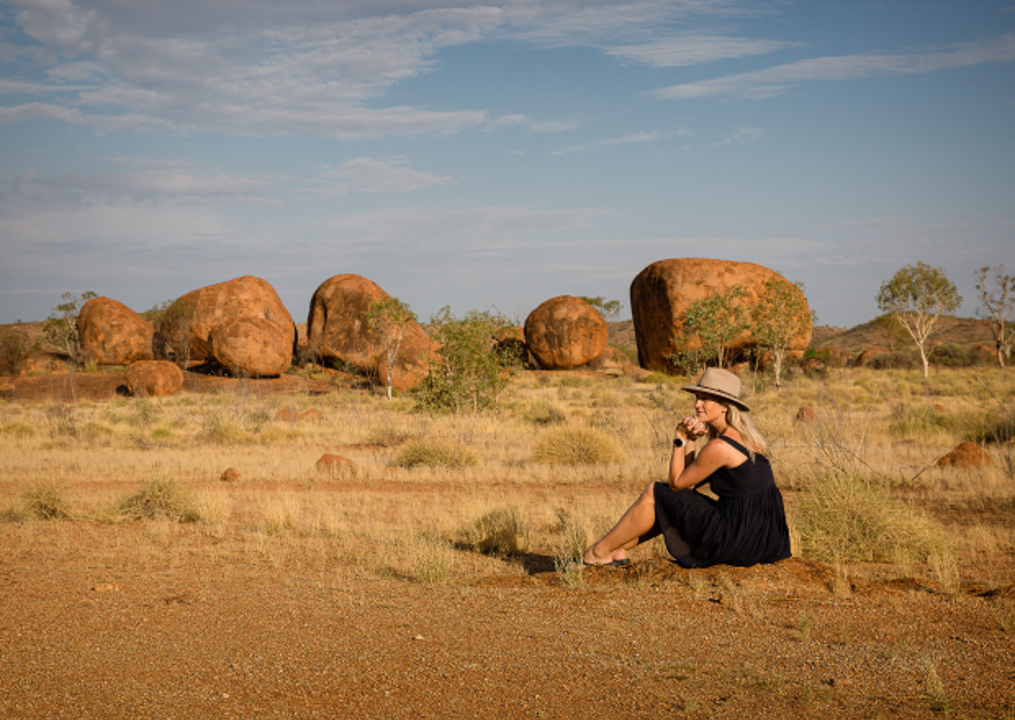
ALICE SPRINGS TO TENNANT CREEK
Driving time – 5 hours (510km)
Alice Springs is popping with things to do: Art galleries in Todd Mall with Aboriginal paintings ready to send home, Olive Pink Botanic Garden, Desert Wildlife Park, Reptile Centre, Anzac Hill, Pioneer Women’s Hall of Fame, Royal Flying Doctor Service Museum plus some incredibly unique festivals and events throughout the year.
Visit the Telegraph Station to learn how this historic development along the Explorers Way opened lines of communication across the country.
After exploring Alice Springs, drive to Karlu Karlu (Devils Marbles) to see the precariously perched granite spheres.
Next stop is Tennant Creek, the site of Australia’s last gold rush in the 1930s. Join an underground tour at the Battery Hill Mining Centre and visit the Nyinkka Nyunyu Art & Culture Centre to learn about the Warumungu people.
Budget tip: If you don’t wish to drive the whole route to Tennant Creek in a day, there is simple bush camping at Karlu Karlu (Devils Marbles) for a small fee – giving you opportunity to view the marbles change colour at sunset or sunrise.
TENNANT CREEK TO DALY WATERS
Driving time – 4 hours (407km)
Along our drive north stop at Threeways – where the road leads to the east coast; Banka Banka West Station campground; Renner Springs where the bar is lined with caps, and Elliott – one of many WWII staging camps on the highway.
Daly Waters has been a haven for Outback travellers since 1930.
The historic pub is “quirky” - like much of the Outback - with a bra-laden bar and an eclectic collection of dusty memorabilia like you’ve never seen before.
Budget tip: If you see an Outback pub or roadhouse, stop for a drink (non-alcoholic if you’re driving) and a chat with the locals.
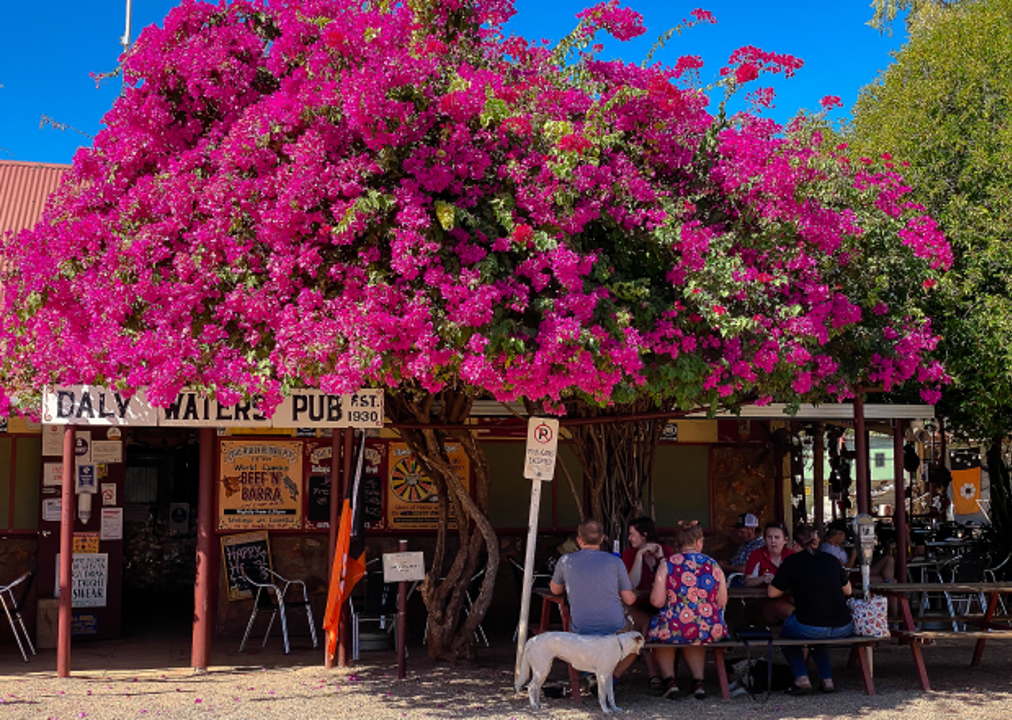
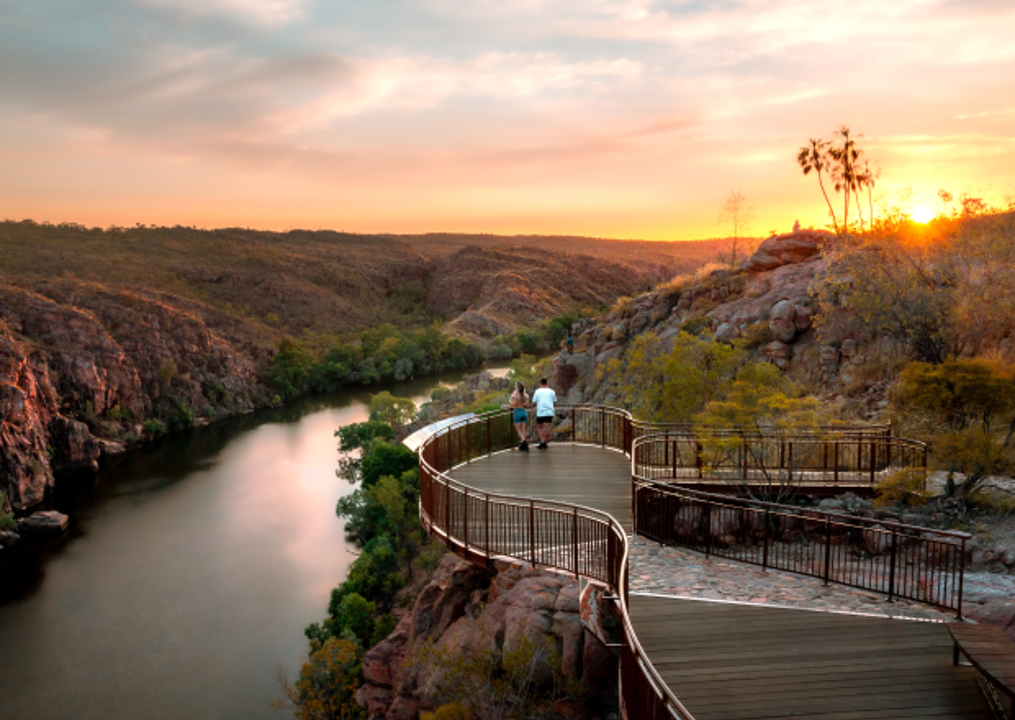
DALY WATERS TO KATHERINE
Driving time – 3 hours (270km)
Quick stop at Larrimah’s Pink Panther Pub then we hit the “hot springs highway”.
Soak in 32C “healing” water at Mataranka Thermal Pools or, if you prefer a more natural setting, float along the palm-fringed stream at Bitter Springs in Elsey National Park.
The warm soaks continue at Katherine Hot Springs.
Katherine is heaven for nature lovers – especially the 13-gorge river system in Nitmiluk National Park. Take a cruise along Nitmiluk (Katherine) Gorge, flanked by 70m cliffs and look for rock art and wildlife as you learn about the stories of the Jawoyn people - the traditional owners of the surrounding land.
Budget tip: For a true outback experience, stay at the Manbulloo Homestead Caravan Park, 12km from Katherine. The Park is on a working cattle property and has daily cattle and water buffalo feeding.
KATHERINE TO DARWIN
Driving time – 3.5 hours (316km)
Leliyn (Edith Falls) is a gorgeous place for a picnic, hike and dip on the way to Darwin.
Litchfield National Park is a mandatory detour to swim in waterholes and waterfalls and to get close to enormous termite mounds that seem to get bigger the further north we go.
Darwin is our final stop – Australia’s northernmost capital city with tropical weather and a laid-back atmosphere that’s easy to lap up. Enjoy waterfront dining, sunset cruises, beach-side markets and the chance to see (and eat) and even swim with crocodiles.
It's a long way to the top of Australia but we’ve made it.
What an adventure!
Budget tip: Visit the Mindil Beach Sunset Market during the dry season (April – September) for a vibrant and eclectic experience. Visitors enjoy stunning sunsets, diverse international cuisines, live entertainment and an array of arts and crafts from local vendors.
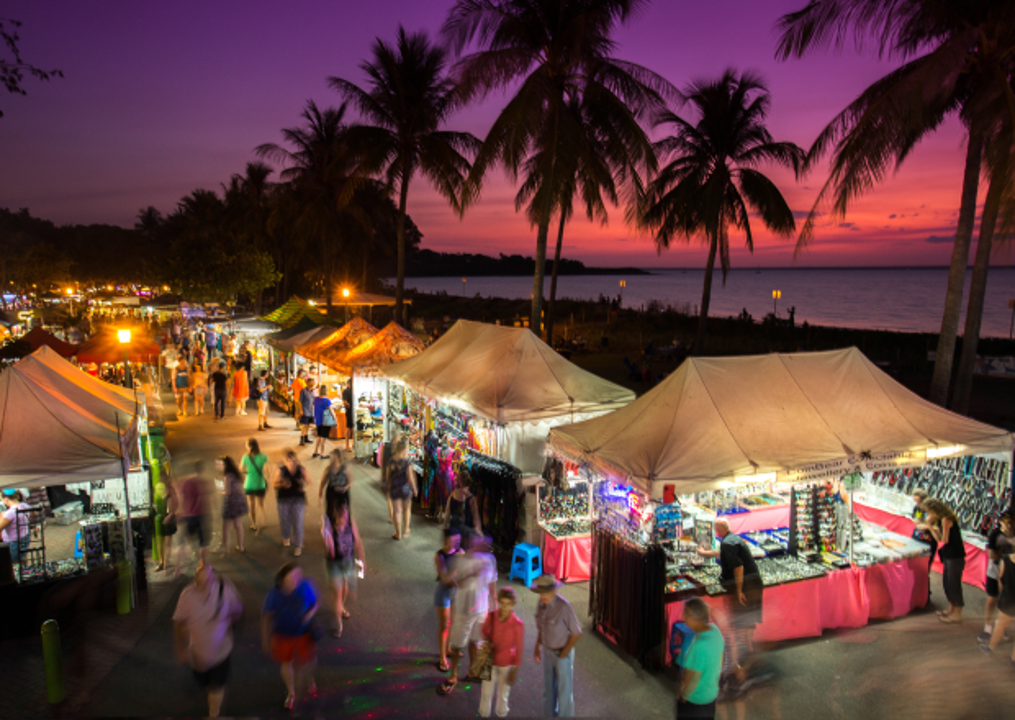

READY TO BOOK YOUR NEXT AWE INSIPIRING HOLIDAY?
DISCOVER UNPARALLELED ADVENTURES WITH THESE HOLIDAY OFFERS.


